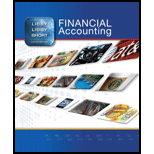
Prepare the
Explanation of Solution
Common stock:
These are the ordinary shares that a corporation issues to the investors in order to raise funds. In return, the investors receive a share of profit from the profits earned by the corporation in the form of dividend.
Par value:
It refers to the value of a stock that is stated by the corporation’s charter. It is also known as face value of a stock.
Journal:
Journal is the method of recording monetary business transactions in chronological order. It records the debit and credit aspects of each transaction to abide by the double-entry system.
Rules of Debit and Credit:
Following rules are followed for debiting and crediting different accounts while they occur in business transactions:
- Debit, all increase in assets, expenses and dividends, all decrease in liabilities, revenues and stockholders’ equities.
- Credit, all increase in liabilities, revenues, and stockholders’ equities, all decrease in assets, expenses.
Journal entries for given transaction are as follows:
a. Issued 30,000 common shares at $40 per share and issued 5,000 shares of
| Date | Accounts title and explanation | Ref. | Debit ($) | Credit ($) |
| Cash (+A) (6) | 1,330,000 | |||
| Common stock (+SE) (1) | 1,200,000 | |||
| Preferred stock (+SE) (4) | 25,000 | |||
| Additional paid-in capital, preferred stock (+SE) (5) | 105,000 | |||
| (To record issuance of common stock and preferred stock) |
Table (1)
- Cash is an assets account and it increased the value of asset by $1,330,000. Hence, debit the cash account for $1,330,000.
- Common stock is a component of
stockholder’s equity and it increased the value of stockholder’s equity by $1,200,000, Hence, credit the common stock for $1,200,000. - Preferred stock is a component of stockholder’s equity and it increased the value of stockholder’s equity by $25,000. Hence, credit the preferred stock for $25,000.
- Additional paid-in capital, preferred stock is a component of stockholder’s equity and it increased the value of stockholder’s equity by $105,000. Hence, credit the additional paid-in capital, preferred stock account for $105,000.
Working note:
Calculate the value of common stock
Calculate the cash received from common stock
Calculate the value of preferred stock
Calculate the cash received from preferred stock
Calculate the value of additional paid in capital, preferred stock
Calculate the value of total cash received from preferred stock and common stock
b. Issued 2,000 shares of preferred stock at $32 each:
| Date | Accounts title and explanation | Ref. | Debit ($) | Credit ($) |
| Cash (+A) (8) | 64,000 | |||
| Preferred stock (+SE) (7) | 10,000 | |||
| Additional paid-in capital, preferred stock (+SE) (9) | 54,000 | |||
| (To record the issuance of preferred stock) |
Table (2)
- Cash is an assets account and it increased the value of asset by $64,000. Hence, debit the cash account for $64,000.
- Preferred stock is a component of stockholder’s equity and it increased the value of stockholder’s equity by $10,000. Hence, credit the preferred stock for $10,000.
- Additional paid-in capital, preferred stock is a component of stockholder’s equity and it increased the value of stockholder’s equity by $54,000. Hence, credit the additional paid-in capital, preferred stock account for $54,000.
Working note:
Calculate the value of preferred stock
Calculate the total cash received
Calculate the value of additional paid in capital, preferred stock
c. Repurchase of 3,000 common shares at $38 per share:
| Date | Accounts title and explanation | Ref. | Debit ($) | Credit ($) |
| Treasury stock (+XSE, -SE) (10) | 114,000 | |||
| Cash (-A) | 114,000 | |||
| (To record the repurchase of common shares from investors) |
Table (3)
- Treasury stock is the contra-equity. There is an increase in the contra-equity which decreases the value of stockholders’ equity. Hence, debit the treasury stock with $114,000.
- Cash is an asset. There is a decrease in the asset. Hence, credit cash account with $144,000
Working note:
Calculate the value of repurchase of shares
Want to see more full solutions like this?
Chapter 11 Solutions
Financial Accounting, 8th Edition
- I need assistance with this general accounting question using appropriate principles.arrow_forwardNonearrow_forwardXavi Enterprises has provided the following projections for 2025: The company's fixed costs are expected to be $194,000. The selling price per unit is $16, while the variable cost per unit is $6. The company aims to earn a net income of $82,000 during 2025. The required sales units to meet the target net income during 2025 is _ (rounded up to the nearest whole number).arrow_forward
- Kelvin Apparel uses straight-line depreciation for financial statement reporting and MACRS for income tax reporting. Four years after its purchase, one of Kelvin's warehouses has a carrying value of $520,000 and a tax basis of $410,000. There were no other temporary differences and no permanent differences. Taxable income was $5.5 million and Kelvin's tax rate is 35%. What is the deferred tax liability to be reported in the balance sheet?arrow_forwardDo fast answer of this general accounting questionarrow_forward5 POINTSarrow_forward

 AccountingAccountingISBN:9781337272094Author:WARREN, Carl S., Reeve, James M., Duchac, Jonathan E.Publisher:Cengage Learning,
AccountingAccountingISBN:9781337272094Author:WARREN, Carl S., Reeve, James M., Duchac, Jonathan E.Publisher:Cengage Learning, Accounting Information SystemsAccountingISBN:9781337619202Author:Hall, James A.Publisher:Cengage Learning,
Accounting Information SystemsAccountingISBN:9781337619202Author:Hall, James A.Publisher:Cengage Learning, Horngren's Cost Accounting: A Managerial Emphasis...AccountingISBN:9780134475585Author:Srikant M. Datar, Madhav V. RajanPublisher:PEARSON
Horngren's Cost Accounting: A Managerial Emphasis...AccountingISBN:9780134475585Author:Srikant M. Datar, Madhav V. RajanPublisher:PEARSON Intermediate AccountingAccountingISBN:9781259722660Author:J. David Spiceland, Mark W. Nelson, Wayne M ThomasPublisher:McGraw-Hill Education
Intermediate AccountingAccountingISBN:9781259722660Author:J. David Spiceland, Mark W. Nelson, Wayne M ThomasPublisher:McGraw-Hill Education Financial and Managerial AccountingAccountingISBN:9781259726705Author:John J Wild, Ken W. Shaw, Barbara Chiappetta Fundamental Accounting PrinciplesPublisher:McGraw-Hill Education
Financial and Managerial AccountingAccountingISBN:9781259726705Author:John J Wild, Ken W. Shaw, Barbara Chiappetta Fundamental Accounting PrinciplesPublisher:McGraw-Hill Education





